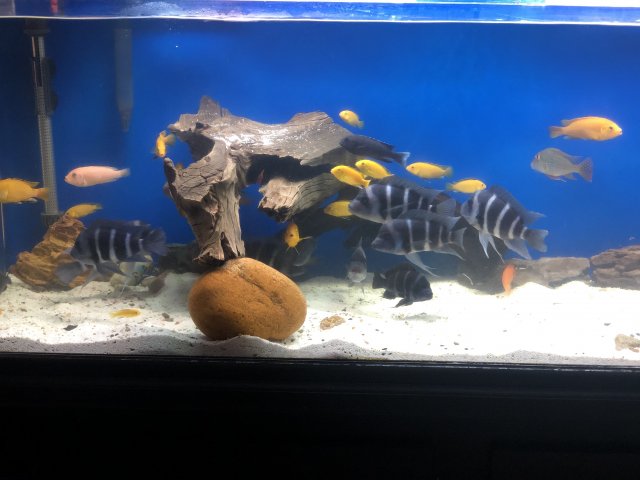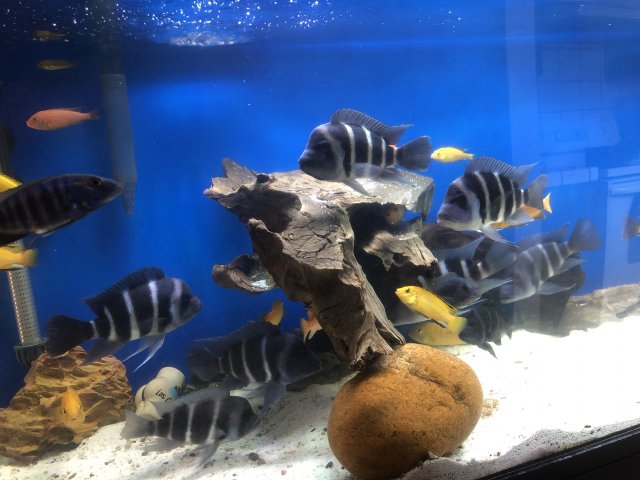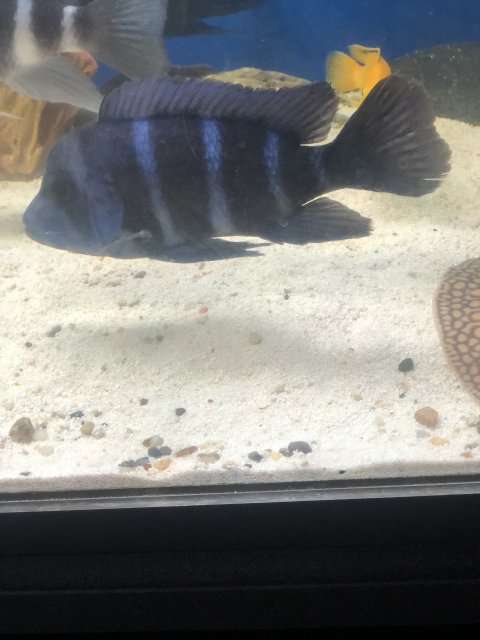Hey.. I just got these wildcaught Blue Zaire Mobas.
Beautiful fronts.........
Information on types of Frontosa
- Thread starter Red Devil
- Start date
You are using an out of date browser. It may not display this or other websites correctly.
You should upgrade or use an alternative browser.
You should upgrade or use an alternative browser.
In the variant map, I don't see Moba, yet Moba is one of the sought after variant. Is Moba a collection point? How about Tanzanite?
Very informative thread...unfortunately the posts were old enough that the pictures in the link started to be gone 
After reading through most of this thread and searching through the rest, as far as I can tell one thing needs to be made clearer here. As posted earlier by a couple of people, but seemingly lost in the shuffle, there is no such thing as C. sp. North. In fact, there never was a "sp. North". Sp. North was suggested as a name by those who speculated that 6 and 7 stripe frontosa would be classified as separate species. This never happened. In fact, a widely published study was done that classified them as the same species (link). So up to this date there are two species of Cyphotilapia and just the two species of Cyphotilapia: frontosa and gibberosa, the northerly fish, whether 6 or 7 striped, and the southerly 6 striped fish, with differences in head markings, scale counts, etc.
So called "sp. North" was taken up and propagated in some circles as if it was an official name, but this prematurely jumped the gun on a classification that is not now and never was officially recognized, not even as an "invalid synonym". At best, "sp. North" is an outdated, defunct, and misleading term that, unfortunately, persists in being erroneously used in circles that are apparently out of touch with the correct and official names of the fish as they currently stand.
I don't mean to offend anyone who has referred to sp. North in this thread, but considering this is a pinned thread that some might use as their source of knowledge about these fish, at least these basic facts should be accurate and clear here.
So called "sp. North" was taken up and propagated in some circles as if it was an official name, but this prematurely jumped the gun on a classification that is not now and never was officially recognized, not even as an "invalid synonym". At best, "sp. North" is an outdated, defunct, and misleading term that, unfortunately, persists in being erroneously used in circles that are apparently out of touch with the correct and official names of the fish as they currently stand.
I don't mean to offend anyone who has referred to sp. North in this thread, but considering this is a pinned thread that some might use as their source of knowledge about these fish, at least these basic facts should be accurate and clear here.
Here are some pics of some of my WC Cyphotilapia gibberosa (Zaire Blue Mikula). I like the Zaire gibberosa from Mikula for the following traits:
Left side

Right side

A few images of Nyatzi



Here is Nyatzi in "super blue" color mode

Here are a few images of the females in Nyatzi's tankl


- Smallest crown (hump) of any Cyphotilapia (including the rest of the Zaire collections points).
- Super dark black pigment (in the black stripes) similar to Kapampa (which is know for the darkest).
- A nice overdose of blue pigment in the white stripes so that when they are in the proper mood they can turn on super blue mode. Combined with the super dark black bars, this allows them to throw purple hues (similar to what the Kitumba are known for).
- Mikula combines what I like best about Kapampa & Kitumba.
Left side

Right side

A few images of Nyatzi



Here is Nyatzi in "super blue" color mode

Here are a few images of the females in Nyatzi's tankl























